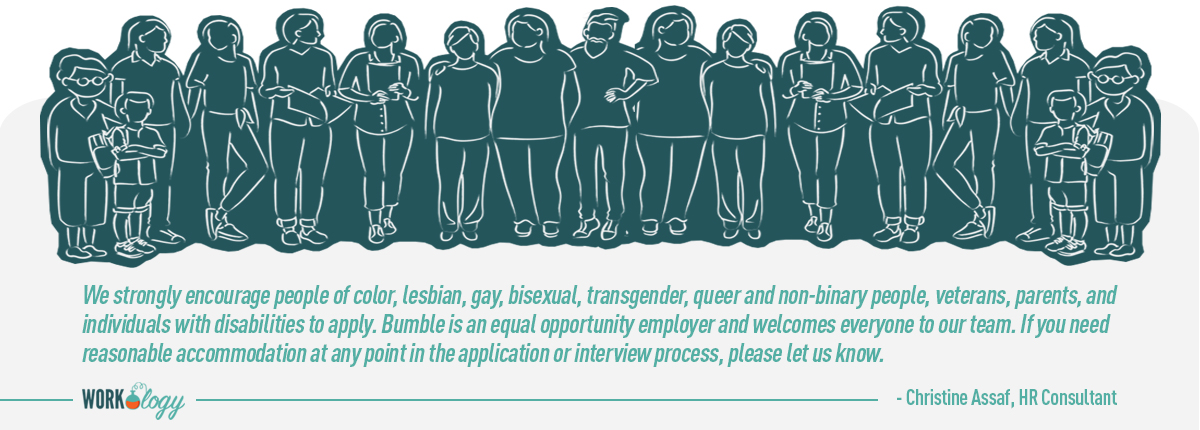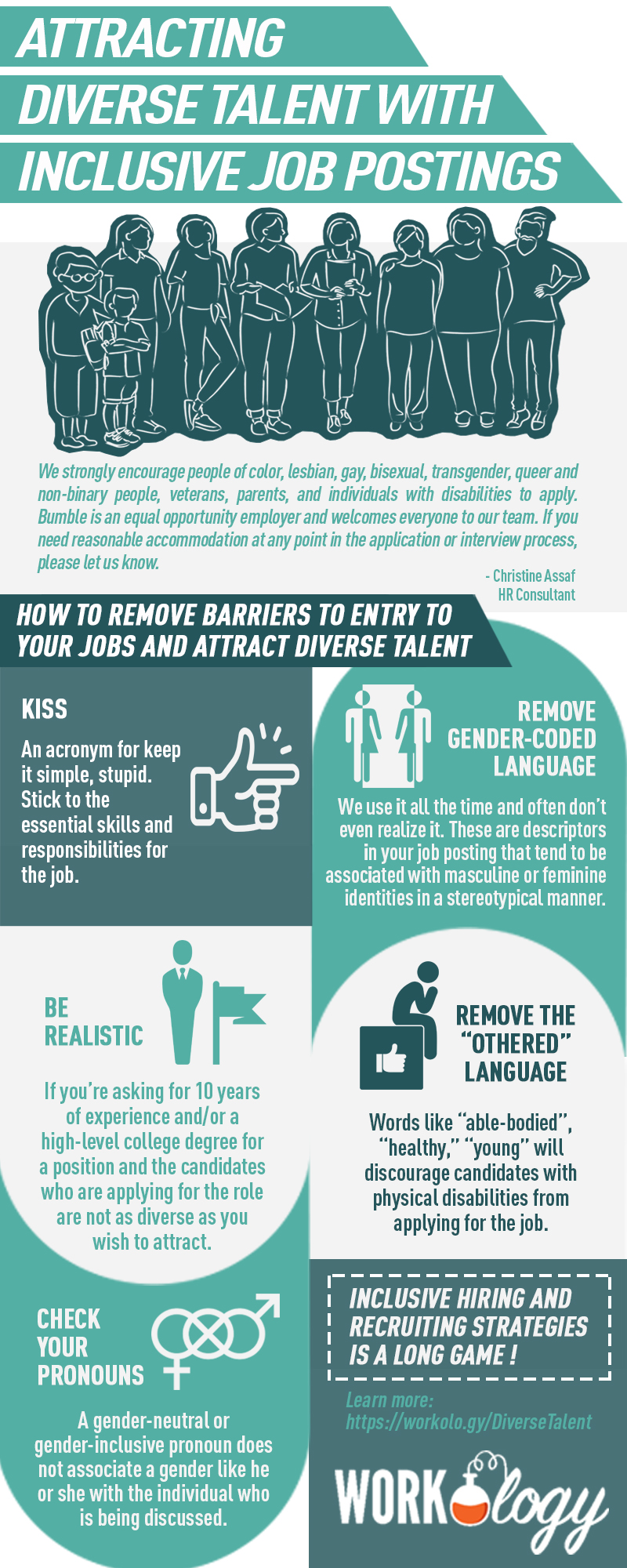Too often, I’ve heard job seekers talk about obstacles that prevent them from applying for jobs with a company they’re genuinely interested in because they don’t feel like that company’s job postings speak to them. As HR professionals we struggle with candidate connection, but less-than-inclusive job postings might just be the reason it’s so difficult. Companies have a diversity problem – not just racial diversity but also for other minority groups including women, veterans, and people with disabilities.
I spend a lot of time working with both candidates and recruiters who are frustrated by the barriers of entry and unrealistic job requirements (expecting 10 years of on the job experience from an entry level candidate, for example – and that’s a real-life example!). Recruiters are working with hiring managers to create job postings that will tick all of the boxes, but hiring managers are not being trained on the delicate balance between “must-have” and “nice to have,” or on biases that may prevent overlooked pools of top talent from applying for your jobs.
How to Remove Barriers to Entry to Your Jobs and Attract Diverse Talent
As HR leaders, we have to work to remove barriers of entry that are preventing a large pool of candidates from applying to our postings, from gendered language to jargon to unrealistic job requirements. We don’t all have the latest AI-based recruitment software that includes screening the text of job postings for gendered language or improper pronoun use. We’re taking apart our job postings and rebuilding them from the ground up. Here are some tips to do just that:
– KISS. I just used an acronym that you may or may not understand. Are you using industry terms or acronyms in your job post? Many skills are transferable between industries and if a strong candidate in another industry can’t get through the jargon on your job posting they’re never going to hit the apply now button. Stick to the essential skills and responsibilities for the job.
– Be realistic. If you’re asking for 10 years of experience and/or a high-level college degree for a position and the candidates who are applying for the role are not as diverse as you wish to attract, consider your company culture. Do your job descriptions reflect that you’re willing to bring on a smart candidate who has baseline skills that can be trained to do the job? Are you hiring for degrees or for culture? Take a look at the best and most successful employees and make a list of the attributes those employees have. Then write job descriptions that match them. For example: What traits really matter to your culture? Willingness to learn is not a degree. Motivation is not taught in college. Energetic is a personality trait. Optimism is a personal outlook.
– Check your pronouns. Last year, I interviewed HR pro-Christine Assaf for the Workology Podcast episode Inclusion and the Use of Gender-Neutral Pronouns in the Workplace. Christine walked me through what gender-neutral pronouns are, how they are used, and most importantly how to make employees or candidates comfortable who are asking to be referred to in this way. A gender-neutral or gender-inclusive pronoun is a pronoun that does not associate a gender like he or she with the individual who is being discussed. Many companies now have identifiers on platforms (such as Slack and Asana) to allow employees to share their preferred pronouns. Others are including the opportunity for candidates to share theirs in their EEO statement at the top of their job postings like this one from Bumble:
We strongly encourage people of color, lesbian, gay, bisexual, transgender, queer and non-binary people, veterans, parents, and individuals with disabilities to apply. Bumble is an equal opportunity employer and welcomes everyone to our team. If you need reasonable accommodation at any point in the application or interview process, please let us know.
In your application, please feel free to note which pronouns you use (For example – she/her/hers, he/him/his, they/them/theirs, etc).
– Remove gender-coded language. We use it all the time and often don’t even realize it. These are descriptors in your job posting that tend to be associated with masculine or feminine identities in a stereotypical manner. The good news is that there is a free online Gender Decoder tool that scans your post for subtle linguistic gender coding. Simply paste your job ad into the open text field, click “check this ad” and you’ll get a report on masculine and feminine coded words in your job description.
– Remove the “othered” language. Words like “able-bodied.” “healthy,” “young” (even when used in describing your company or employees) will discourage candidates with physical disabilities from applying for the job. Including “great opportunity for a student” will discourage older candidates from applying, and “mature person preferred” will do the opposite. If there are necessary qualities that relate to these in your job requirements, reword them so that bias is removed, for example, “a person must demonstrate maturity” instead of “mature candidate preferred” or “person who can connect with a youthful demographic” instead of “youthful candidate preferred.”
Inclusive Hiring and Recruiting Strategies Is a Long Game
In order to really make a difference and hire and retain a more diverse workforce, inclusive job descriptions of one of the many enhancements and changes TA teams as well as organizations will make along the way. It’s important to remember that inclusive hiring and also workplaces are a long game. These take years of change management, training and re-programming, and thousands of conversations before an organization is able to see and tie these strategies to visible and meaningful change. What’s most important and impactful is that senior leadership be leaders in these inclusive programs making time to have conversations and eating the dog food so to speak at EVERY CHANCE THEY GET. Only then will inclusion have a chance of being successful.











One Comment
THANKS FOR THE POST. HAD SOME GOOD INSIGHTS. APPLYING THE SAME FOR ACQUIRING FRESH TALENTS FOR OUR EDUTECH ORGANISATION.
Comments are closed.